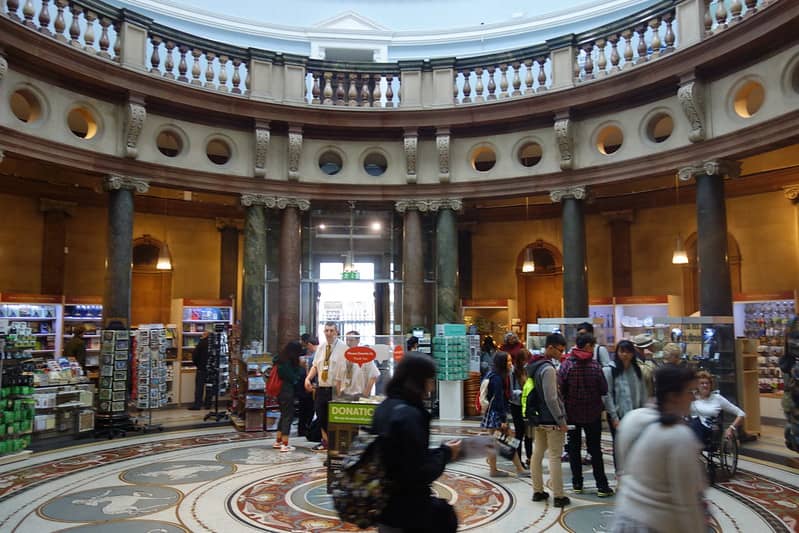National History Museum – The National Museum of Ireland
One of the three branches of the National Museum of Ireland, the Natural History Museum is located between Government Buildings and the House of the Oireachtas on Merrion Street. First opened in 1857, the Museum is virtually unchanged since its opening, bar some restoration work in 1909 and 2007 after the grand stone staircase was deemed unsafe.
The Victorian style Museum is home to a fascinating collection of over 2 million species which are situated side by side in a building full of old Victorian charm and scientific wonderment.
The ground floor is dedicated to Irish wildlife featuring the mammals, sea creatures, birds and some butterflies that could have been found in Ireland at some point, with the centrepiece being the skeleton of the now extinct giant Irish elk.
The upper floors of the building feature the World Animals Collection and are dedicated to animals found throughout the world. There you will find an exhibition that jumps from continent to continent and includes outstanding examples of animals found throughout the history and far reaches of the world.
The Museum has no admission charge and visitors are welcome to explore the collections by themselves at their own pace. The Museum of Natural History is one of the top things to do in Dublin for any history buffs or anyone looking to see Dublin on a budget.
Fun Fact
Some of the large exhibits face away from the entrance. This is due to a new entrance being constructed at the east end of the building facing Merrion Street in 1909. This reversed the direction from which visitors approached the exhibitions and explains why some of the large exhibits still face away from the entrance; it was too difficult to turn the whales and elephants around to face the new entrance.
Contact Details:
National History Museum, Merrion St Upper, Dublin 2
Tel: +353 (0) 1 677 7444
Getting There:
Hop off the CityScape Tour at: Stop 20 Merrion Street (see Route Map)
